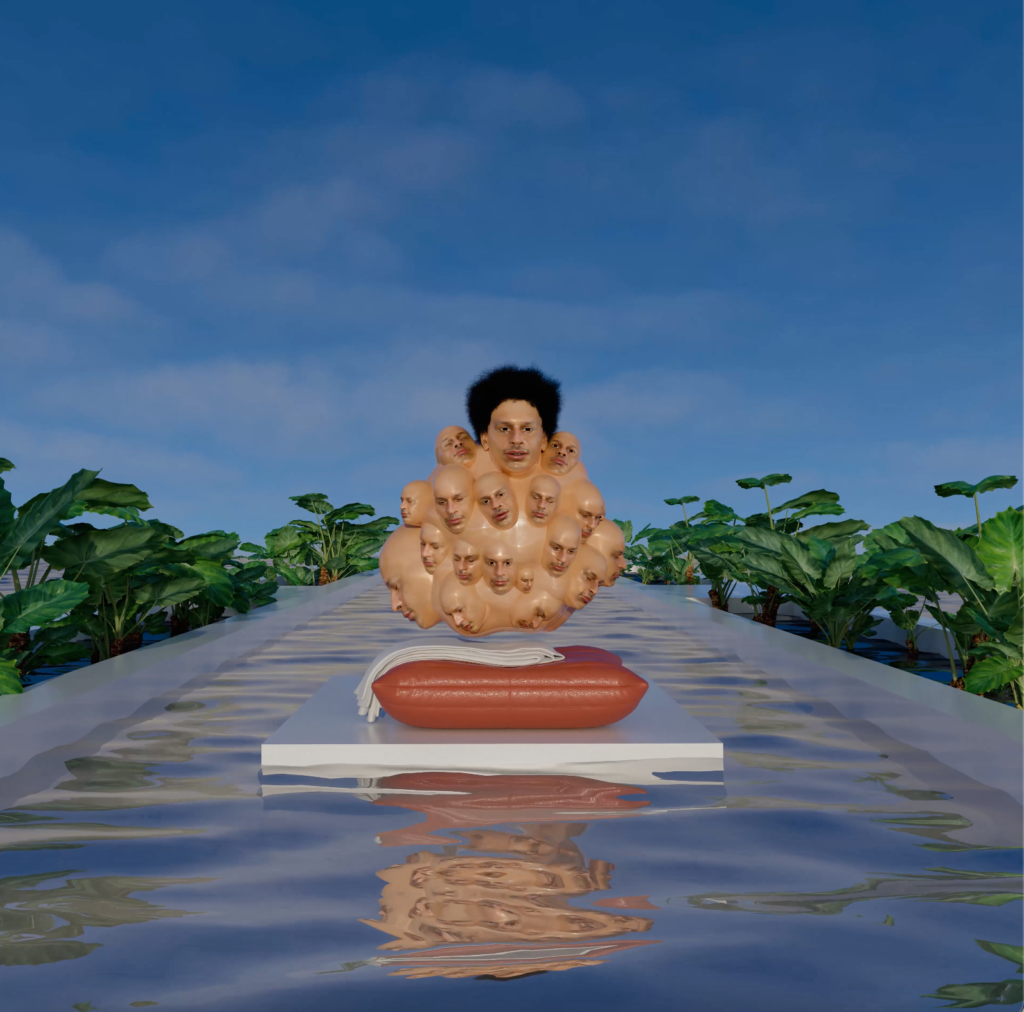Eric Andre has announced his debut into the NFT space with his piece “Nonflushable Turd.” After joining Foundation just this month, Andre’s one and only piece, “Nonflushable Turd,” minted on June 21, 2021, is being auctioned off at noon PST on June 24th. The piece depicts a multi-headed amalgamation of flesh, covered in Andre’s face, amidst a serene backdrop. This audiovisual piece was crafted in collaboration with Maylee Todd (musician), Kyvita (multi-media artist), and Matthewdavid McQueen (music mastering).
Andre announced his NFT debut via Instagram this past week—but shortly after removed the post. Fans and foes alike have begun to accuse Andre of being a “hypocrite” or a “sellout” for making this move.

Andre is best known as the creator and host of the “The Eric Andre Show” on Cartoon Network’s late-night program, Adult Swim. Unlike traditional late-night television—constrained by certain etiquette, and oriented towards the comfort and viewing pleasure of its audience—Andre’s show refuses to run smoothly, basks in discomfort, and capitalizes off of the incomprehensible. His transition into the world of NFTs has undoubtedly been no different.
Some onlookers repudiate Andre’s involvement in this new space, suggesting he is no longer the countercultural icon he used to be; others speculate that Andre may have taken down this Instagram announcement after receiving such backlash.
I would think it expedient to further examine what this shift into the NFT space means for Andre’s work before jumping to such conclusions.

Some critics cite environmental impact. First of all, when compared with almost any other industry, (fashion, food, shopping, internet providers, etc-) the amount of energy being used by the ethereal blockchain is negligible. Current efficiency also has the potential to be ameliorated once Ethereum is able to transfer to a Proof of Stake (POS) system, as opposed to its current proof of work system (POW). Put simply, this would allow for transactions to only be processed by one computer/server at a time, as opposed to multiple. Like in any new industry, efficiency can always be improved.
Others take the position that transferring to the big-tech, high-capital world of blockchain runs counter to Andre’s “counter-cultural” brand. But, Andre’s work—this piece as no exception—centers upon the unbelievable. The NFT art space, as it currently exists, has constantly embraced the “new”, as a futuristic and extremely iterative space. The unbelievable is a core tenet of this.
https://twitter.com/crybaby_shame/status/1407421095813201921?s=20
If we apply the Dadaist objective of “overturning traditional notions” to Andre’s work, his entrance into the world of NFTs starts to make a little bit more sense. The concept of Dada, borne out of the aftermath and socio-political attitudes of the first world war takes on a worldview of nihilism—a surrendering to the absurd. In our contemporary political climate, we begin to see a resurfacing of such attitudes. If reality seems absurd, Dadaism takes it a step further. Today, we exist in an age of limitless information, biological warfare, and increased political polarization—to the point where it seems nearly impossible to consider what our future might look like. We find ourselves, once again, turning towards the absurd because what else is one to do in times like these, but laugh?
“Hypermodernity” describes our current situation in which technology has begun to rapidly outpace expectations, but also describes the new body of multi-media art we see taking form, especially in the NFT space.
https://twitter.com/AugustusEDH/status/1407315046749937666?s=20
We may have never expected Eric Andre to put out an NFT, but when has Andre given us what we have expected? The Eric Andre Show takes a sledgehammer to the concept of the traditional talk show and affronts audiences with unexpected expletives, nonsensical narratives, and shock-value comedy. His work in music, under the pseudonym “Blarf,” follows suit with a similar lack of structure. Blarf’s most recent album “Cease and Desist” features a nearly thirteen-minute song entitled “I Worship Satan ” in which car chase sounds and static noise are intermittently cut by samples from Stanley Kubrik’s Paths of Glory. Across genres, Andre has left us with a lot to make sense of, but little to make sense of it. His NFT debut is no exception.
Ultimately, it’s not supposed to make sense. And it doesn’t.



